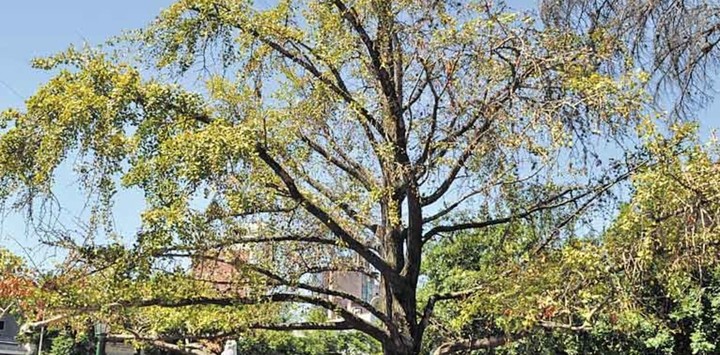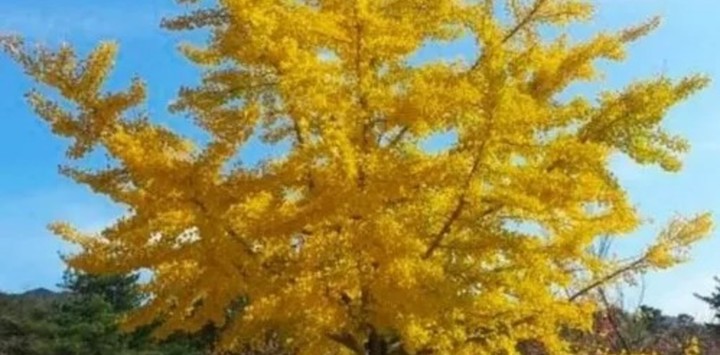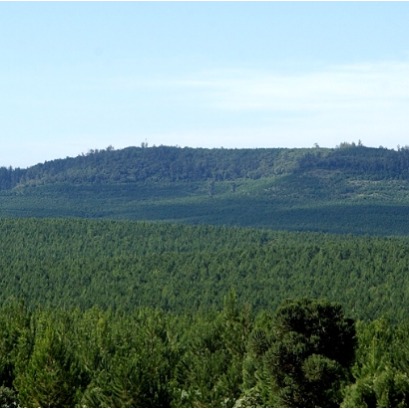
It is the only immortal tree that exists in the world and there are specimens in Argentina
• He survived the dinosaurs and the Hiroshima bomb. • They do not die of old age but can be killed by lightning, fire, wind, or the hand of man. • Ginkgo biloba grows mainly in China and Korea, and to a much lesser extent in the United States, the south of France, in some cities in Spain, and in certain parts of Uruguay, Chile and Argentina.
It is found in several provinces, and in the Federal Capital there are specimens in the old zoo, the Botanical Garden, the Parque neighborhood, in the Plaza Belgrano in the Belgrano neighborhood and in the Japanese Garden.
And it is immortal. Its origin dates back to 200,000,000 years ago and it was food for the dinosaurs. Scientists once believed it had disappeared, but a German doctor, Engelbert Kaempfer, found it in 1691 in Japan.
It had also survived in China, in monasteries and gardens of Buddhist temples, where it had been cultivated since the year 1000. It then spread by seed to Japan and Korea, and from there it was taken to Europe and in the 1700s to America.
He survived the atomic bomb
On August 6, 1945, the United States dropped the atomic bomb on Hiroshima. The city was devastated after the explosion. Tens of thousands of people died and everything in a radius of more than 10 kilometers was devastated.
However, 1,000 meters from where the bomb fell, something almost miraculous happened: a ginkgo specimen, located in the Housenbou temple, managed to survive.
When one sees the medicinal uses it has, the astonishment increases. Many doctors prescribe it to combat anxiety, Alzheimer's, vision problems in people with diabetes, peripheral vascular disease (a disease that causes poor blood circulation in the legs), premenstrual pain, schizophrenia, tardive dyskinesia (pathology which causes the muscles to move involuntarily), vertigo and dizziness.
Also sexual dysfunction, seasonal affective disorder (those people who suffer depression with the change of season), asthma, cocaine dependence, high blood pressure, multiple sclerosis, ringing in the ears, heart disease, dyslexia, fibromyalgia, cancers such as colorectal, stomach, ovarian and pancreatic.
And the list also includes that it fights hemorrhoids, migraines, Raynard syndrome (a blood vessel disorder), seasonal allergic conjunctivitis, strokes, high cholesterol and arteriosclerosis. Improves memory, thinking speed and attention.
After that list you understand why he is considered, in addition to being immortal. as miraculous.
The immortal tree
And now we know why he is immortal. A Japanese doctor who lived to be 105 years old, Dr. Hinohara, genetically analyzed ginkgo trees aged between 15 and 667 years in the United States and China, and discovered that their growth does not slow down even after hundreds of years, and that The quality of the seeds was also not affected by the passage of time.
All thanks to the chemicals it produces and that protect it such as antioxidants, antimicrobes and protective hormones, and it also does not activate genes related to old age, as happens with any tree and plant.
The new research focused on the tree's vascular cambium, a thin layer of tissue in the trunk that produces new bark and wood.
Secondary tree growth shows no decline for ginkgo trees from 10 to 600 years old. "It appears that the vascular cambium in biloba may retain the capacity for continuous growth for hundreds of years or even millennia," the new studies conclude.


IT MAY INTEREST YOU
 Free seminar on the implementation of the European EUDR regulation on deforestation-free wood products
Free seminar on the implementation of the European EUDR regulation on deforestation-free wood products
The Argentine Forestry Association (AFoA) organizes the seminar «EUDR in Forest Products: Current status of implementation. Regulatory requirements and private experiences", which will take place on Wednesday, November 26, from 11:00 a.m. to 12:00 p.m., via Zoom, with live streaming on YouTube. The European Regulation on Deforestation-Free Products (EUDR) will enter into force on December 31, 2025 and will impose new requirements for forest products entering the European Union market.
 Native forest | In Misiones, controls are tightened on routes for illegal transport of native wood, logging of forests without permits and fraudulent digital guides
Native forest | In Misiones, controls are tightened on routes for illegal transport of native wood, logging of forests without permits and fraudulent digital guides
Informality in forestry activity in Misiones was once again evident, the culture of operating illegally is a historical problem, and the Ministry of Ecology and Renewable Natural Resources carries out the corresponding control and inspection operations in the regulation of productive activity and sustainable management for the use of native forests.
 The forest of the oldest shadows: the story of the petrified trees
The forest of the oldest shadows: the story of the petrified trees
One of the natural treasures of Río Negro turns 23 years old under the protection law that allows its conservation. Where it is and how it was formed. Río Negro celebrates 23 years of conservation in the petrified forest as a Protected Natural Area (ANP). It is a space of 625 hectares that protects an exceptional site of fossil trunks that date back more than 60 million years.





















